When we first discussed doing a new magazine dedicated to budget HiFi systems, I knew exactly what I wanted to review for my premier article. Though I had not actually listened to the Magnepan LRS, I knew and had been a long time fan of the Magnepan sound. Having extensively reviewed both Schiit Audio products and Black Dragon cables I knew that these were ideal to make a complementary system.
Upon returning from my trip to the Schiitr (the Schiit retail store in Newhall, CA), I discovered that I had the gear for not only one system, but four with sufficient resources to at least discuss a fifth.
The Systems:
It was my initial intent to include the Schiit Sol in this review as a true analog junkie at heart, but one was not available so it will have to be subject of a future review. As it turns out, a fully loaded Schiit Ragnarok 2 includes both a phono stage and a multi-bit DAC making it perfect as the heart of my entry-level system. (Note: Systems employing the Bifrost 2 with the Ragnarok 2 are priced with the base model Ragnarok) So the systems that will be discussed in this review are as follows:
System 1:
- Magnepan LRS Planar Magnetic Speakers
- Schiit Ragnarok 2 DAC/Preamp/Headphone Amplifier/Loudspeaker Amplifier
- Black Dragon USB cable
- Black Dragon V1 Speaker cables (1 pair 8’)
- Black Dragon V1 Power cable (1)
System Price: $3,389
System 2:
- Magnepan LRS Planar Magnetic Speakers
- Schiit Bifrost 2 Multibit DAC
- Schiit Ragnarok 2 Preamp/Headphone Amplifier/Loudspeaker Amplifier
- Black Dragon USB cable
- Black Dragon Interconnects (1 pair Balanced – XLR)
- Black Dragon V1 Speaker cables (1 pair 8’)
- Black Dragon V1 Power cable (2)
System Price: $4,388
System 3:
- Magnepan LRS Planar Magnetic Speakers
- Schiit Bifrost 2 Multibit DAC
- Schiit Ragnarok 2 Preamp/Headphone Amplifier/Loudspeaker Amplifier
- Schiit Vidar Intelligent Stereo/Mono Loudspeaker Amplifier
- Black Dragon USB cable
- Black Dragon Interconnects (1 pair Balanced – XLR, pair Single-ended – RCA)
- Black Dragon V1 Speaker cables (1 pair 8’)
- Black Dragon V1 Power cable (3)
System Price: $5,687
System 4:
- Magnepan LRS Planar Magnetic Speakers
- Schiit Bifrost 2 Multibit DAC
- Schiit Saga+ Tube Hybrid Preamplifier
- Schiit Vidar Intelligent Stereo/Mono Loudspeaker Amplifier
- Black Dragon USB cable
- Black Dragon Interconnects (2 pair Single-ended – RCA)
- Black Dragon V1 Speaker cables (1 pair 8’)
- Black Dragon V1 Power cable (3)
System Price: $4,832
System 5:
- Magnepan LRS Planar Magnetic Speakers
- Schiit Bifrost 2 Multibit DAC
- Schiit Preamp/Ragnarok 2 Headphone Amplifier/Loudspeaker Amplifier
- Schiit Vidar Intelligent Stereo/Mono Loudspeaker Amplifier (2)
- Black Dragon USB cable
- Black Dragon Interconnects (2 pair Balanced – XLR)
- Black Dragon V1 Speaker cables (1 pair 8’)
- Black Dragon V1 Power cable (4)
System Price: $6,686
Black Dragon Cables:
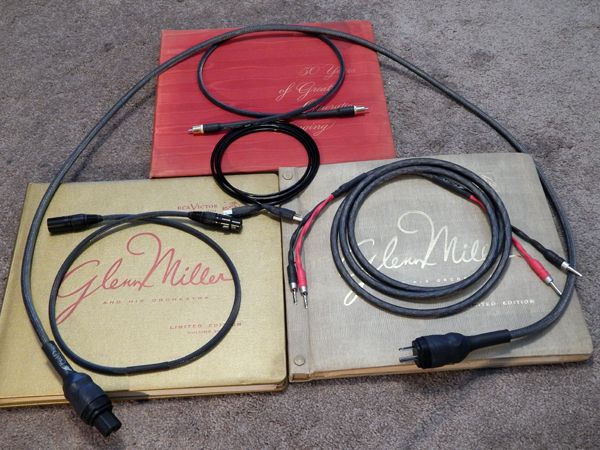
I can hear you saying to yourself, “If this is a budget system, why the expensive cables?” The answer is simple, in a two-channel Loudspeaker HiFi system the cables are as much a component to the sonic presentation as any of the electronics. Especially when working with planar speakers (this includes electrostatics) where phase coherency and linear bandwidth are everything. Simply put, cables can make a spectacular system sound mediocre. That is to say that it is easier for a cable to ruin the sound than to improve it, so it really can’t be considered a tweak as they are a make or break component. In fact, in a system like this, the electronics are more of a tweak than the cables (which is why there are five systems rather than one), with the exception of the power cables, which are definitely a tweak as they improve the sound rather than determine it, but in an audio review in for a penny in for a pound (well, a dollar here in the US).
So it was with careful consideration that I picked the Black Dragon Cables from Moon Audio for this system. Your speaker is the start point, it is the body of your sound and everything else is life support, IE: they need to fulfill the needs of the speaker as well as be complementary to each other. As those familiar with the Personal Audio world probably well know, Planar Magnetic speakers thirst for current, and this is something that Black Dragon speaker cables excel at. In fact, there was a palpable increase in volume and dynamic range when I switched from my burn-in cables to the Black Dragons. Both Magnepan and Schiit Audio products are incredibly neutral in tonal balance, so it is critical that the interconnects and speaker cables be so also, which again is a known characteristic of the Black Dragons. If you want to add a little pizzazz and energy to the system you can go with the Silver Dragons, but for me, it will always be the Black Dragons. And as I hinted at earlier, planar speakers are all about soundstage and imaging, and to achieve this you need extreme phase linearity and coherency as well as a wide linear bandwidth, again needs that led me to the Black Dragon. And finally, since this is meant to be a budget system, Black Dragon punches well above its weight class, making it a relatively inexpensive cable.
As to USB, bandwidth is extremely important in High-Resolution digital audio, truth is I have used expensive high-end USB cables that couldn’t pass DSD. While this isn’t an issue with PCM only Schiit DACs, there is still an inverse ratio between error correction and fidelity.
Those who read my review in our sister publication Headphone.Guru of the Blue Dragon power cables know how impressed I was by the lowered noise floor and increased dynamic range afforded by a simple power cable and the Black Dragon is a significant improvement over that, employing Teflon dielectric and high purity slow drawn Copper.
The technical details on the cables used in this review are as follows:
Black Dragon USB cable 6’ $140:
Black Dragon USB cable utilizes 99.999% pure single crystal UP-OCC copper construction employing 24AWG Teflon insulated stranded copper conductors with a double layer shield to ward off outside interference and provide the best possible digital bus transmission.
Black Dragon Interconnects 3’ RCA $300:
Black Dragon Interconnect strandings are all 99.9998% high quality low crystalline structure pure UPOCC copper. Each conductor is 21.5awg in size with a double shield by both a foil and 100% multidirectional braided wire shield using Teflon coating. As an extra layer of noise protection (the geometry being one guard against unwanted outside noise interference) a copper 100% shield coverage is added with a Techflex outer jacket.
Connectors – Cardas GRMO RCA made of non-magnetic, eutectic Brass, Rhodium over Silver plate, with a Gold plated Brass cover
Black Dragon Interconnects 3’ XLR $300:
See above
Connectors – Neutrik Gold XLR
Black Dragon V1 Speaker cables 8’ $500:
Black Dragon V1 Speaker Cables employ a new geometry, using a special stranded grouping. The copper strandings are all 99.9999% high-quality, low crystalline structure, pure copper. There are 4x11awg conductors. A standard run will yield approximately 2x6awg conductors, and a bi-wire set, which uses an internal bi-wire design, will yield 4x11awg conductors. As with the other cables a Teflon coating is chosen along with a Techflex outer jacket.
Black Dragon V1 Power cable 6’ $300:
Black Dragon V1 Power cables contain 4-11Awg Stranded high purity slow drawn Copper conductors per cable in a star Quad configuration. Each conductor is made up with a special selection of stranding sizes, 2 for the positive and 2 for the negative, this yields an 8awg total size per signal polarity. All conductors are individually wrapped in Teflon and the 4 conductors are then twisted together and Teflon taped as well. The cable has a single 100% coverage shield which is covered in 2 layers of Techflex braiding for added protection and good looks. Furutech FI-11M (gold) 15A/125V connectors are used which are Alpha Copper based with a 24 karat gold plating.
Magnepan LRS Planar Magnetic Speakers:
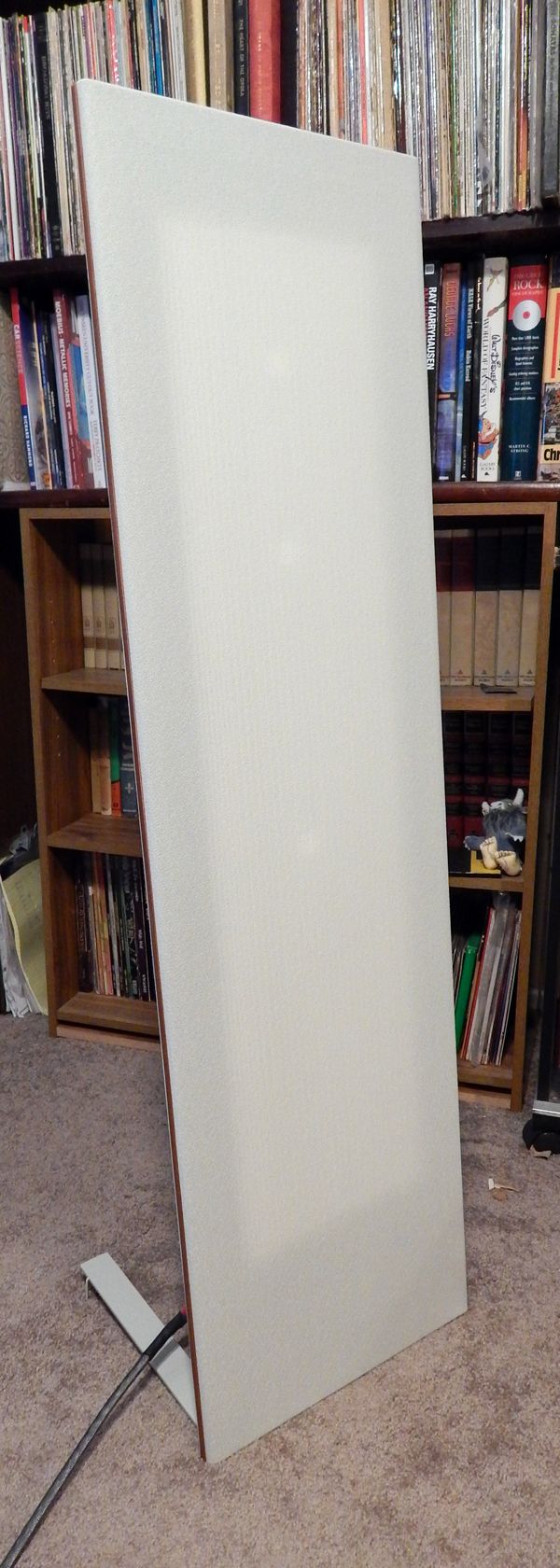
Again, I hear you thinking, “Why would you use a $650 speaker in what is optimally an almost $7,000 system?” The answer is, as noted above, the speaker is your starting point and you build the system around it. The better question is, “Why is this amazing speaker that can justify a $7,000 system to achieve its full potential, only $650?” That’s the magic of planar magnetic designs, just like in headphones, they can give you near electrostatic performance at a fraction of the costs.
So, what’s so special about planar speakers anyway?
- A planar speaker is pretty much the counterpoint to a microphone. A microphone is a fixed plane that receives all of the sound waves in a room and converts them to an electric signal. A planar speaker is a fixed plane that converts that electric signal back to sound waves so that they arrive at your ear in the same temporal and phase configuration as they were received by the microphone. This translates into spectacular imaging and soundstage.
- It’s all about speed, or more correctly acceleration and deceleration, which determines how accurately those sound waves are reproduced. The relative diaphragm mass of a planar speaker is significantly less than a conventional dynamic loudspeaker. This is due to the fact that the motive energy is applied evenly across the diaphragm rather than to a fixed point and so the diaphragm does not have to be as rigid, which means lighter materials (this is also why conventional loudspeaker drivers are cone-shaped, to increase rigidity, which also creates micro distortions as the waves produced by the inside of the driver reach your ear at a different time than those on the outside, which is also why some driver manufacturers have tried to make flat coned loudspeaker diaphragms). Also in a planar magnetic design, the voice coil is applied to the diaphragm directly (usually in the form of a thin lightweight foil) rather than requiring a heavy former (often made of metal) to contain the voice coil.
- The upshot is that planar speakers reproduce a much more accurate, more natural and more musical sound, soundstage and image than is possible with conventional drivers.
Why the Magnepan LRS (“Little Ribbon Speaker”) Planar Magnetic Speakers? Well, I’ve been a fan of Magnepan since I first heard the Magneplanar MG II speakers back in the 70s, in fact, they were my introduction to planar speakers and over the years I have seen many variants on the planar magnetic (Quasi-Ribbon as they are currently referred to by Magnepan, though I always liked Orthodynamic) speaker, but none have really risen to rival the original Magnepans, and other than some prudent updating of the technology and a significantly smaller footprint, the Magnepan LRS is very similar to the MG II. Hence they were my first choice for this inaugural review.
Now for the caveat. The one weakness of planar speakers is limited excursion, which means that unless you want speakers that are six feet square (such as the legendary Manepan Tympani) they are not going to produce extreme volumes, so they are not going to be your first choice for a House Party or night club. This also tends to have an effect on the extreme low end, rolling off at about 50 Hz (which is not actually unusual for high-end speakers), so if you listen to a lot of organ music you will probably want to add a subwoofer (something that operates well in the 16 Hz to 50 Hz realm rather than a home theatre sub, generally smaller drivers work better at keeping up with planar speakers).
For the technical detail I felt it best to quote Magnepan directly:
“Quasi ribbon driver

The quasi ribbon driver is a variation on the original true ribbon design. The true ribbon, as shown below, is a very simple device. The ultra-thin aluminum foil carries the current from the amplifier and is also the means of moving the air to create sound. No voice coil. No cone. No surround. No box. Nothing except the ribbon.
The quasi ribbon is ANY variation from the original true ribbon—and there are many. The Magneplanar quasi ribbon is simply a true ribbon on a mylar film. This design is very rugged and cost-effective with very wide bandwidth. Many of the best high-end headphones use planar magnetic quasi ribbon drivers. You will recognize the sonic similarity of a Magneplanar and planar magnetic quasi ribbon headphones.
Both the Magneplanar true ribbon and quasi ribbon drivers eliminate the need for a transformer—nothing between the amplifier to degrade the sound. Ribbon drivers are non-reactive and act as a simple resistor to the amplifier. While Magneplanars do require an amplifier with the ability to drive a 4-ohm load, the non-reactive load will allow an amplifier to perform at its best.”
For more on Magnepan’s Magneplanar technologies click Here.
Magnepan LRS Planar Magnetic Speakers $650
Specs:
Description | 2-Way / Quasi-Ribbon |
Freq. Resp. | 50 – 20 kHz |
Rec Power | |
Sensitivity | 86dB / 500Hz / 2.83v |
Impedance | 4 Ohm |
Dimensions | 14.5 x 48 x 1 inch |
Available in natural or black solid oak, dark cherry trim with off-white, grey or black fabric. |
Schiit Ragnarok 2 DAC/Preamp/Headphone Amplifier/Loudspeaker Amplifier:
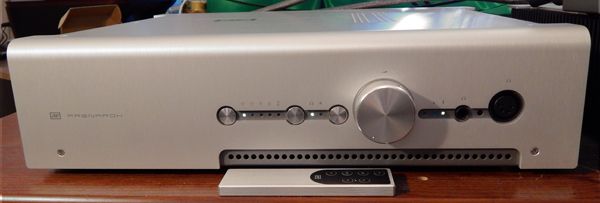
The Schiit Ragnarok 2 is Jason Stoddard’s Pièce De Résistance employing a control knob actuated 128-Step Relay-Switched Volume Control as one small token of its no holds barred approach to sound quality, and now available “Fully Loaded” with a Moving Magnet Phono Stage and a True Multibit DAC built-in, it can act as the complete electronics for both a high-end audiophile Headphone and a high-end audiophile Loudspeaker system. A complete review of the Ragnarok 2 as a Headphone DAC/Amplifier will be forthcoming in our sister publication Headphone.Guru, so for now I will concentrate on its role as a DAC/Preamp/Loudspeaker Amplifier.
The True Multibit DAC module is the same as the one used in the Headphone.Guru Product of the Year Award-winning Schiit Lyr 3 reviewed here. This module treats you to Mike Moffat’s decades-long in development Multibit digital magic (which was first introduced to the public in the famous Theta Digital Frankenstein in the late 1980s). For those who don’t know, PCM is a multi-bit format, but the majority of modern-day DACs are single-bit which is less accurate but easier, therefore cheaper to produce.
The Ragnarok 2 debuts Schiit’s unique differential Nexus™ gain stage converting single-ended inputs to balanced outputs, and balanced inputs to single-ended outputs—in a single gain discrete gain stage, without gain differences between modes, and with good performance in all modes. It is able to deliver 60W into 8 ohms and 100W into 4 ohms, for excellent performance with most speakers. It also delivers full power through the balanced headphone jack (24W into 32 ohms) and quarter-power output from the single-ended headphone jack (6W into 32 ohms), with three selectable gain settings.
For your convenience it includes a purpose-specific remote control (meaning that it won’t interfere with the remotes for other Schiit devices) allowing you to perform all front panel functions; Source, Headphone/Loudspeaker Output, Volume UP/Down, Gain, plus Mute.
Like all Schiit products, it is designed and manufactured in California, with the majority of the production occurring in the U.S. including transformers, boards, chassis, and assembly.
Schiit DAC/Preamp/Ragnarok 2 Headphone Amplifier/Loudspeaker Amplifier $1,499 – $1,799
Specs:
Power Output, Speaker Outputs: | 8 Ohms: 60W RMS per channel / 4 Ohms: 100W RMS per channel |
Power Output, Balanced Headphone Output: | 32 Ohms: 24W RMS per channel / 50 Ohms: 15W RMS per channel / 300 Ohms: 3W RMS per channel / 600 Ohms: 1.5W RMS per channel |
Power Output, Single-Ended Headphone Output | 32 Ohms: 6W RMS per channel / 50 Ohms: 3.75W RMS per channel / 300 Ohms: 750mW RMS per channel / 600 Ohms: 375mW RMS per channel |
Frequency Response: | 20Hz-20Khz, -0.1db, 3Hz-350KHz, -3dB |
THD: | <0.01%, 20Hz-20KHz, at 100W RMS into 8 ohms |
IMD: | <0.01%, CCIR, at 100W RMS into 8 ohms |
SNR: | >115db, A-weighted, referenced to full output |
Damping Factor: | >80 into 8 ohms, 20-20kHz |
Gain: | 2, 8, or 25 (balanced, half those gains through headphone SE output) |
Input Impedance: | 10k ohms |
Crosstalk: | >95dB, 20-20kHz |
Inputs: | (2) pairs XLR balanced inputs, (1) RCA single-ended input, |
Topology: | Nexus™ differential current feedback with nested differential stages |
Oversight: | microprocessor-controlled monitoring and management of critical operational points, with relay shut-down for DC, overcurrent, thermal, and other faults |
Power Supply: | 600VA transformer with dual mono main rails, plus boosted, regulated supply to input, voltage gain and driver stages, plus separate, isolated and regulated rails for microprocessor management. |
Power Consumption: | 500W maximum |
Size: | 16” x 13” x 3.875” |
Weight: | 32 lbs |
Schiit Bifrost 2 Multibit DAC:

Schiit Bifrost 2 is the latest of the Schiit Multibit DACs, and my personal favorite. You can read a full review of the Bifrost 2 in our sister publication Headphone.Guru here. It provides the same extreme accuracy and resolution of the previous Schiit Multibit DACs with a before unachieved musicality. It is a fully balanced DAC which implements completely unique D/A converters and proprietary time- and frequency-domain optimized digital filters.
The Bifrost 2 also introduces all-new proprietary Unison USB, based on a general-purpose PIC32 microprocessor, using precision local clocks and complete electromagnetic and electrostatic isolation, for better sound quality and greater reliability.
The stylish aluminum remote along with source select and mute, offers my favorite DAC function which is a must-have on a two-channel loudspeaker system; Phase Reversal, as Absolute Phase is critical to building a proper soundstage.
And finally, Schiit has applied their Autonomy™ Architecture to the Bifrost 2, making the DAC is completely modular, which means quite a bit of future-proofing.
And again Designed and Built in California
Schiit Bifrost 2 Multibit DAC $699
Specs:
Conversion Type: | Schiit True Multibit™ |
D/A Conversion IC: | Analog Devices AD5781ARUZ x 2 |
Digital Filter: | proprietary Schiit time- and frequency-domain optimized digital filter implemented on Analog Devices SHARC DSP processor, running 8X oversampling |
Analog Stage: | Differential, based on LME49724 for both balanced and single-ended output, direct-coupled throughout |
Frequency Response: | 20Hz-20KHz, +/-0.1dB, 2Hz-100KHz, -1dB |
Maximum Output: | 2.0V RMS single-ended and 4.0V RMS balanced |
THD: | <0.003%, 20Hz-20KHz, at max output |
IMD: | <0.004%, CCIR |
SNR: | >114dB, referenced to 2V RMS |
Inputs: | Coaxial SPDIF, Optical SPDIF, USB |
Input Capability: | up to 24/192 for all inputs |
Input Receiver, SPDIF: | |
Output: | RCA (single-ended) and XLR (balanced) |
Output Impedance: | 75 ohms for both |
Power supply: | 24VA transformer, 8 stages of regulation, including separate supplies for critical digital and analog sections |
Upgradability: | Autonomy™ architecture with externally replaceable DAC/Analog Card and USB Input Card, plus MicroSD card slot for firmware updates |
Remote control: | included, controls source selection, phase invert, and mute. |
Power Consumption: | 12W |
Size: | 9 x 6.75 x 2” |
Weight: | 5 lbs |
Schiit Saga+ Tube Hybrid Preamplifier:

The Schiit Saga+ is Schiit’s premier single-ended Tube Hybrid Preamplifier. Like the Ragnarok it employs a control knob actuated relay-switched stepped attenuator which can also be operated via the remote control. The 6SN7 hybrid tube buffer can be bypassed at the push of a button on the front panel or remote changing the Saga+ into a remote-controlled passive preamp with five inputs and two sets of output for use with a second amplifier or subwoofer.
Like the Lyr 3, the Saga+ is a single tube design opening up the world of tube rolling to those who like to experiment at a significantly lower cost (since finding matched tubes is not an issue).
Once again Designed and Built in California
Schiit Saga+ Tube Hybrid Preamplifier $399
Specs:
Hybrid Tube Buffer Stage:
Frequency Response: | 20Hz-20Khz, -0.2db, 3Hz-200KHz, -3dB |
THD: | <0.001%, 20Hz-20KHz, at 1V RMS |
IMD: | <0.001%, CCIR (active stage) |
SNR: | >108db, A-weighted, referenced to 1V RMS |
Output Impedance: | 180 ohms |
Maximum Output: | 10V RMS |
Passive Stage:
Output Impedance: | Output Impedance: varies, maximum 4.8 kohms |
Both Passive or Active Stage:
Gain: | Approximately 1 (0dB) through either passive or active stage |
Input Impedance: | 10 kohms |
Crosstalk: | >-75dB, 20Hz-20KHz |
Inputs: | 5 RCA pairs, selectable via front switch or remote |
Outputs: | 2 RCA pairs, selectable via front switch or remote |
Buffer Stage: | |
Volume Control: | relay-switched stepped attenuator with discrete thin-film resistors , 64 1dB steps |
Power supply: | One 24VA transformer with regulated +/-100V rails, plus 6.3VDC heaters and 5VDC for microprocessor |
Power Consumption: | 25W typical |
Size: | 9″W x6″D x 2″H, plus additional 1.25″ H for tube |
Weight: | 6 lbs |
Schiit Vidar Intelligent Stereo/Mono Loudspeaker Amplifier:

Last but not least we come to the Schiit Vidar. Given Jason’s extensive background in epic groundbreaking amplifiers, great things are expected. To quote Schiit’s website,
“Vidar is nothing less than a no-excuses, exotic-topology, Class-AB, linear-supply, microprocessor-controlled, power-doubling, dual-mono-ish, intelligently-managed, drives-almost-anything power amp. No Class D, no switching supplies, no fans, no compromises, nothing in the signal path but music—for a three-figure price tag.”
Vidar’s 600VA transformer gives it the ability to double its 100W per channel into 8 ohms into 4 ohms and double that again when bridged to mono (which is done by the simple expedient of using a preamp with a balanced output) for true monoblock performance at 400 watts per channel into 8 ohms.
To enhance performance and reliability a microprocessor oversees important aspects of amplifier operation, from DC offset to over-current and over-temperature faults. “This provides stable, safe operation without invasive current-limiting, fuses, or active devices in the power supply path.”
And you guessed it, Designed and Built in California.
Schiit Vidar Intelligent Stereo/Mono Loudspeaker Amplifier $699
Specs:
Power Output: | Stereo, 8 Ohms: 100W RMS per channel / Stereo, 4 Ohms: 200W RMS per channel / Mono, 8 ohms: 400W RMS |
Frequency Response: | 20Hz-20Khz, -0.1db, 3Hz-500KHz, -3dB |
THD: | <0.01%, 20Hz-20KHz, at 100W RMS into 8 ohms |
IMD: | <0.01%, CCIR, at 100W RMS into 8 ohms |
SNR: | >115db, A-weighted, referenced to full output |
Damping Factor: | >100 into 8 ohms, 20-20kHz |
Gain: | 22 (27dB) |
Input Impedance: | 22k ohms SE, 44k ohms balanced |
Crosstalk: | >95dB, 20-20kHz |
Inputs: | L/R RCA jacks for stereo input, single XLR for mono input |
Topology: | Fully complementary, all-BJT, current feedback, no coupling capacitors or DC servos |
Oversight: | microprocessor-controlled monitoring and management of critical operational points, including DC offset, with relay shut-down for overcurrent, thermal, and other faults |
Power Supply: | 600VA transformer with dual mono main rails, plus boosted, regulated supply to input, voltage gain and driver stages, plus separate, isolated and regulated rails for microprocessor management. |
Power Consumption: | 700W maximum |
Size: | 9” x 13” x 3.875” |
Weight: | 22 lbs |
The Listening Tests:
After a hundred or so hours of burn-in and a little time spent tuning the speaker placement, it was time for the listening tests.
Just a couple of notes on speaker setup; Planar speakers like lots of air around them, so you want them at least 3’ from any wall surface, preferably 6’ if you have the room. The distance between the speakers should be half that of the distance of the listening position to the center point between the speakers. Ideally, you want a symmetrical room with a live end (slight echo when you clap your hands) and a dead end (no echo when you clap your hands), which is which depends a lot on the speaker, some speakers want to interact with the room, most don’t, and rear wall reflection will give you a more immersive sound stage. Most speakers are designed to be listened to “on-axis” (facing straight forward), but the width and depth of your soundstage can be adjusted by changing the toe-in (moving the speaker to more or less face the listener). I do this with a combination of mono recordings and orchestral recordings.

I began my tests with System 1, the Ragnarok, the Maggies and the Black Dragon Cables. I pulled up the 24/96 kHz stream of The Who’s new album “Who” on Qobuz for a first listening. To say that the sound was surprisingly good is a bit of a misnomer, it would be more correct to say that it was “as expected” amazingly good. The Maggies did what Planar speakers do best, put you in the room with the performers. The opening piano refrains of “Ball and Chain” were about twenty feet away slightly to the right of Daltrey who was center stage about ten feet forward of that. To his left and right were Pete’s guitar tracks as if he were twins. The drums and bass were tight and expressive, centered on a plane with the piano, with plenty of impact, if not room shaking resonance. The dynamic range was impressive given the modest 100 Watts of the Ragnarok. As to tonal balance and timbre of instruments and vocals, it was so natural that my first thoughts were about imaging and soundstage, not even thinking about the fact that I was listening to a recording through speakers.

Since the Maggie’s strong point is reproducing acoustical instruments and vocal, I next selected a live version of “The Needle And The Damage Done” (“Harvest” – 24/192 kHz) by Neil Young and was not disappointed. It was front row at a large music hall.
Switching to System 2 the difference was subtle but distinct. The addition of the Bifrost 2 added a level of musicality and enlarged soundstage.

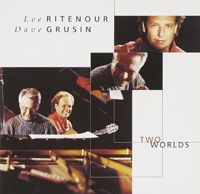
It was like moving from a front row at The Greek Theatre to a box at the Hollywood Bowl as exemplified by “Romanian Folk Dances: Stick Dance, Sash Dance, Stamping Dance, Horn Dance, Romanian Polka, Fast Dance, Béla Bartók, featuring Gil Shaham” from Lee Ritenour and Dave Grusin’s “Two Worlds” (16/44.1 kHz). Each musician was laser-sharp in his own space on the stage. The piano was about ten feet away with the performer facing the audience, the bass keys on the left and the treble on the right, with the guitar on the right and the violin on the left each slightly in front of the piano.

System 3 brings us a doubling of power, giving us the dynamic range to handle larger productions at a fairly loud volume. During my initial sound checks, I was captured by the system’s reproduction of Pink Martini’s performance of “Que Sera, Sera (Whatever Will Be, Will Be)” (“Sympathique” – 16/44.1 kHz), so I returned to it for System 3. The sound was haunting and enveloping and the crescendos were hair raising. China Forbes’ voice was silky, crisp and clear, and the orchestra had live performance dynamics. The bells, marimbas, and xylophones had such a musical ring without any stridency or harshness.
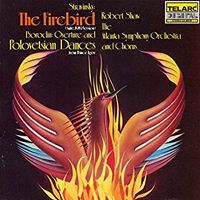
Which brings us to the long-awaited System 4, surrendering the authority and versatility of the Ragnarok for the magic of tubes (or tube in this case). While I used quite a bit of classical and orchestral music throughout my listening sessions, I saved “The Firebird Suite” for this section, where I knew I would get the most bang for the buck. Opting for my 24/96 kHz vinyl rip of Robert Shaw and the Atlanta Symphony Orchestra performance (“Stravinsky: The Firebird/Borodin: Music from Prince Igor”) I sat back to be wowed or cowed, and wowed I was. While not quite as dynamic as the Ragnarok, the Saga+ reminded me of why I love this piece so much, and why I remain a tube man at heart. The clarity and sweetness of the triangle even during the shattering crescendos was amazing, and the overall musicality was chill-inducing. Not only was the soundstage fully three dimensional, with a clear picture of the orchestra, but the most subtle variations in tonality and timbre of the different instruments were also fully realized.
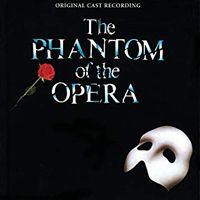
As a final test I cued up “Think Of Me” from the Original London Cast Recording of “Phantom Of The Opera” (16/44.1 kHz) as performed by Sarah Brightman, and it made it very hard to stop. The full heart-rending emotion elicited by her voice resonating off the walls of the theater was laid bare and palpable.
The Conclusions:
The Magnepan LRS Planar Magnetic Speakers with the Schiit Bifrost 2 Multibit DAC, Schiit Saga+ Tube Hybrid Preamplifier, Schiit Vidar Intelligent Stereo/Mono Loudspeaker Amplifier, and Black Dragon cables represent an end-point solution that would easily satisfy a budget-constrained audiophile. Musical, with amazing imaging and soundstage, as well as, pitch-perfect timbre and tonality it is well worth the investment.
The other systems with the Schiit Ragnarok 2 DAC/Preamp/Headphone Amplifier/Loudspeaker Amplifier as core represent a logical progression that can be achieved starting with a very reasonable initial investment that still provides epic sound quality and later ramped up as budget and space allow to the logical end-point of System 5 with its additional 6dB of dynamic range represented by the 400W into 8Ω per channel of the extra Vidar, which should be sufficient for the most discriminating of hard rockers.
Needless to say, this system or I should say these systems completely fulfilled my expectations and stand as highly recommended on my part.

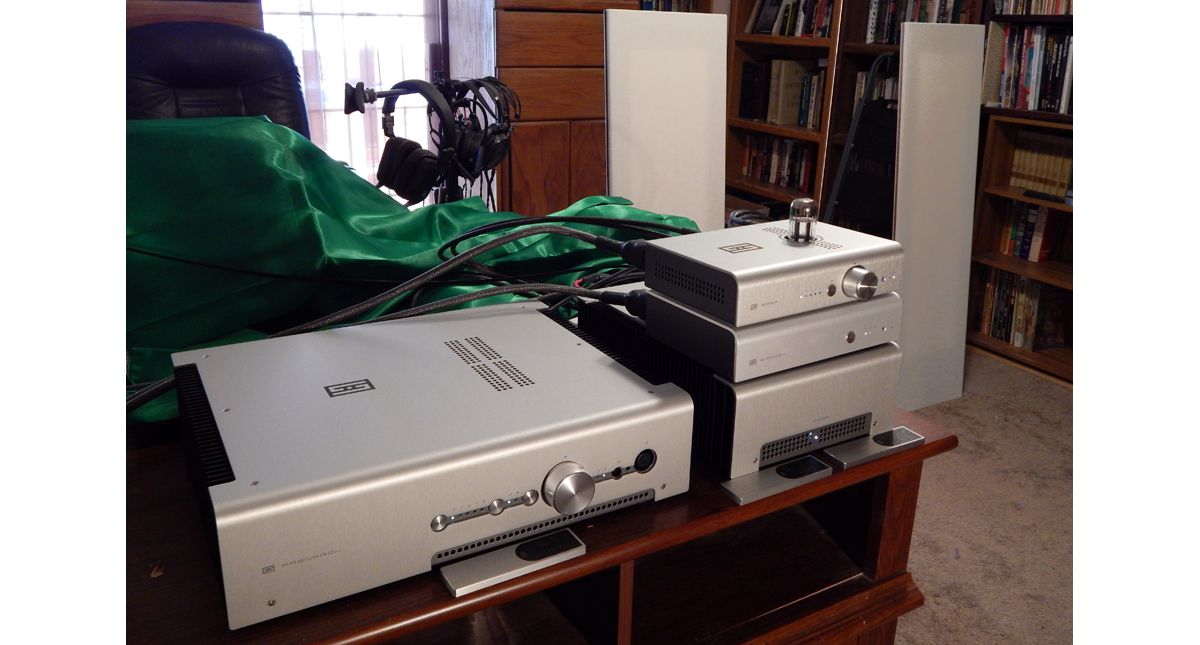






I find it amusing that people with the Surname “Barker” are also LRS lovers!
Today, I debut my new YouTube channel called DIY HiFi Life. My premiere video features three ways to upgrade the Magnepan LRS speaker to take them to the next level. Even if you don’t have the LRS, you may find my technique for integrating a subwoofer in a 2.1 HiFi system of interest.
https://youtu.be/FvPmfhBZHWs
It is truly great that someone now does whole system packages..or that I finally stumbled on to one.
Well done and hope there are many more.
Regards
Tom